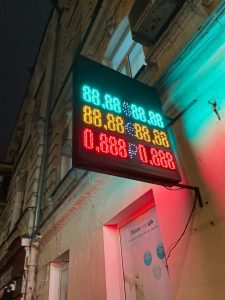Forex market structure refers to the way the market is organized, and how prices are set. Identifying market structure is important for forex traders, as it can help them to make more informed trading decisions. There are several ways to identify market structure in forex, and here we will discuss some of the most common methods.
1. Price Action Analysis
Price action analysis is one of the most popular and effective ways to identify market structure in forex. This involves analyzing the price movement of a currency pair over a period of time, and identifying key levels of support and resistance. Support levels are price levels that have historically prevented the price from falling further, while resistance levels are price levels that have historically prevented the price from rising higher.
By analyzing the price action of a currency pair, traders can identify the current market structure. For example, if the price is consistently making higher highs and higher lows, this indicates an uptrend or bullish market structure. Conversely, if the price is consistently making lower highs and lower lows, this indicates a downtrend or bearish market structure.
2. Moving Averages
Moving averages are another tool that traders can use to identify market structure in forex. Moving averages are trend-following indicators that smooth out price fluctuations over a set period of time. By plotting moving averages on a chart, traders can identify the direction of the trend and the current market structure.
For example, if the price is consistently trading above a long-term moving average, this indicates a bullish market structure. Conversely, if the price is consistently trading below a long-term moving average, this indicates a bearish market structure.
3. Fibonacci Retracement
Fibonacci retracement is a tool that traders can use to identify key levels of support and resistance in the forex market. The tool is based on the Fibonacci sequence, a mathematical sequence in which each number is the sum of the previous two numbers. Traders can use Fibonacci retracement levels to identify potential areas of support or resistance, based on the percentage retracements from a recent high or low.
For example, if a currency pair has recently made a high at 1.5000 and is now trading at 1.4000, a trader can use Fibonacci retracement levels to identify potential areas of support. The most common retracement levels are 38.2%, 50%, and 61.8%. In this example, the 50% retracement level would be at 1.4500, which could potentially act as a key level of support.
4. Market Depth
Market depth refers to the level of liquidity in the forex market, and can be used to identify market structure. Traders can use market depth data to identify key levels of support and resistance, based on the volume of orders at each price level.
For example, if there is a large volume of orders at a particular price level, this indicates a key level of support or resistance. If the price breaks through this level, it could indicate a shift in market structure.
5. News and Economic Data
Finally, traders can use news and economic data to identify market structure in forex. Economic data, such as GDP, inflation, and employment figures, can provide valuable insights into the health of a particular economy, and can influence the direction of the currency pair.
Similarly, news events, such as central bank announcements or geopolitical developments, can also have a significant impact on the forex market. By staying up-to-date with the latest news and economic data, traders can identify potential shifts in market structure and make more informed trading decisions.
In conclusion, there are several ways to identify market structure in forex, each with its own strengths and weaknesses. By using a combination of these methods, traders can gain a more comprehensive understanding of the market, and make more informed trading decisions. Ultimately, successful forex trading requires a deep understanding of market structure, and the ability to adapt to changing market conditions.






